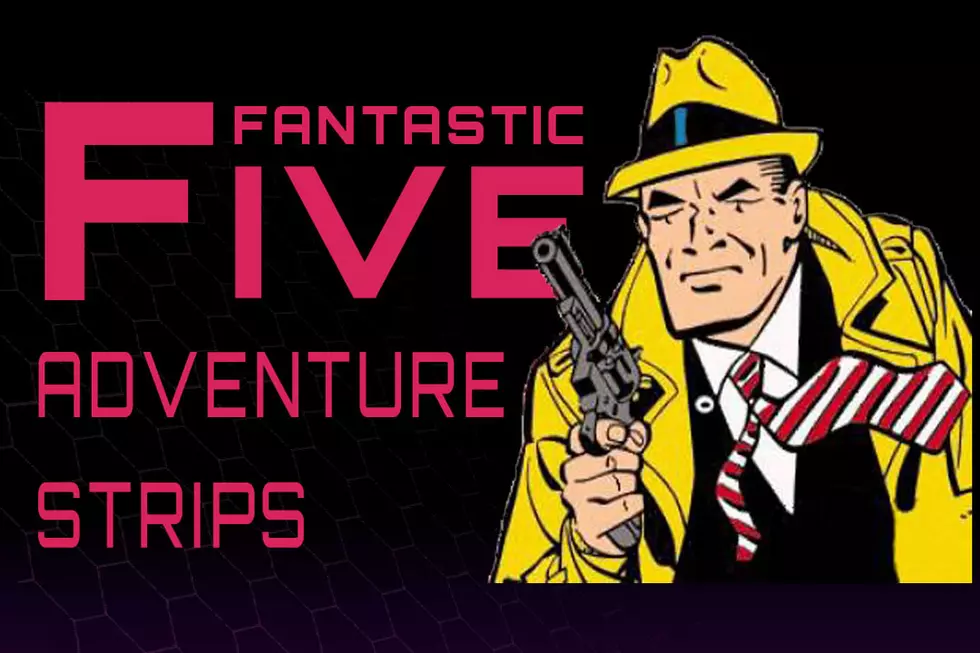
Ye Gods! A Birthday Tribute to Chester Gould, Creator of ‘Dick Tracy’
It's safe to say that cartoonist Chester Gould, born on this day all the way back in 1900, is well known because of one strip: Dick Tracy. Though he did other work over the course of his long career --- much of it about his adopted home city of Chicago --- it's hard to deny that creating arguably the most famous fictional police detective and drawing a comic about him for 46 years is a whole career in itself.
Of course, it wasn't just the square-jawed Tracy who cemented Gould's strip as one of the most well-read police yarns of its day. The colorful criminals who served as Tracy's foils and terrorized the generically named "The City" were just as iconic. Big Boy Caprice was a not-too-subtle Al Capone analogue, but he was one of the more subdued characters in terms of appearance, considering that Pruneface, Flattop, Lips Manlis, Littleface, B-B Eyes, Doc Hump and Flyface, to name a few, all lived up to their names.
For its first 25 years or so, Gould's Dick Tracy strip stuck to its crime roots, with a revolving door of criminals going up against the titular detective. It took a bit of a turn in the 1960s, though. Gould attempted to change the strip with the times, introducing sci-fi elements beyond the gadgets --- including the famous, always-labeled two-way wrist radio --- that were the occasional focus.
In a 1963 story, local magnate Diet Smith drove his magnet-powered "space coupe" to the moon and returned with a character who came to be known as Moon Maid, a woman who had horns and electrical powers. She eventually fought crime alongside Tracy.
The strip's sci-fi turn was initially very popular, with more newspapers opting to carry the strip after Moon Maid's debut, but once astronauts landed on the moon in 1969, Gould believed that the strip's direction was becoming stale, and turned back toward street-level crime stories.
In the last few years of Gould's run on the strip, stories started resolving within a single strip, following along with the trends of the day --- where in the 1950s, stories would stretch on for as long as a year. Gould also made Tracy more political, using the strip is something of a soapbox to argue against Supreme Court rulings that guaranteed the rights of the accused. Those strips led to complaints and reduced readership.
Gould retired from Tracy in 1977, just eight years before his death in 1985. He handed over the reins to cartoonist Max Allan Collins, who continued the strip until 1993. The strip continues today, written by Mike Curtis, with art by Joe Staton.
Dick Tracy has become an undeniable part of popular culture, and an influence on just about every fictional police detective that came after him, even though he may not have been as visible in recent years as he was in his heyday. He was featured in a big-budget, live-action 1990 movie starring and directed by Warren Beatty, who apparently still has designs on making a sequel. He's also been the target of countless parodies. IDW Publishing has been collecting Gould's strip in its entirety since 2006.
And yes, Chester Gould did other work. His topical strip about Chicago, Why It's a Windy City, was probably very insightful. But ye gods, Dick Tracy is his legacy.
Happy Birthday, Chester.
More From ComicsAlliance


![Rogues’ Gallery: Who Is Dick Tracy’s Ultimate Enemy? [Poll]](http://townsquare.media/site/622/files/2016/12/DT-Vote.jpg?w=980&q=75)






